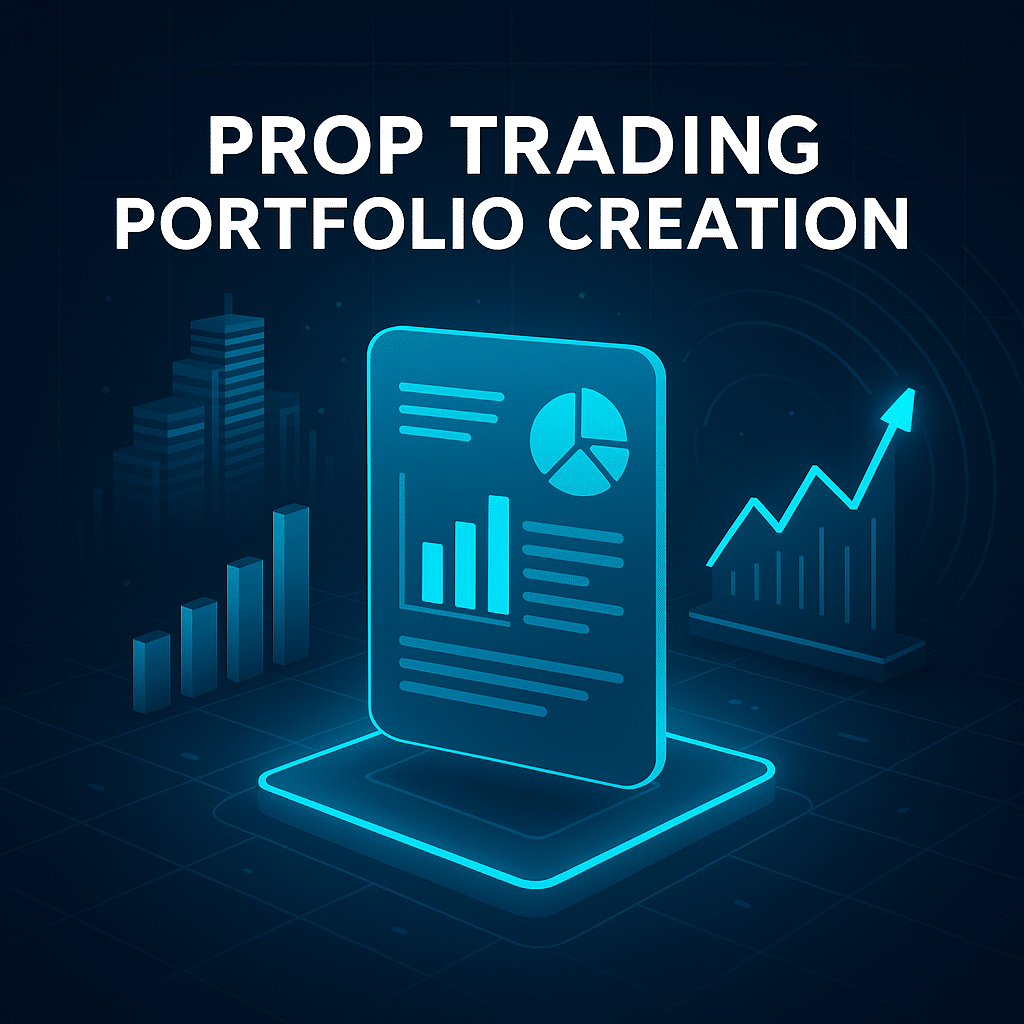Introduction: Why Prop Trading Portfolio Creation Matters
In the world of proprietary trading, success isn’t only about passing a challenge—it’s about long-term consistency. Prop trading portfolio creation is a crucial skill once you’ve been funded. Unlike during evaluation stages, being funded shifts the goal from merely achieving targets to maintaining sustainable profits. A well-structured portfolio helps showcase your strengths, reduce emotional decision-making, and enhance your career as a professional trader.
What Is a Prop Trading Portfolio?
A prop trading portfolio refers to a documented collection of trades, setups, instruments, and strategies that a funded trader consistently uses. While many retail traders focus on short-term wins, funded traders at firms like Larsa Capital are expected to show discipline, risk management, and strategy evolution over time.
Building this portfolio is not just a habit—it’s a professional tool. It can be used to assess performance, tweak approaches, and eventually scale capital responsibly.
Benefits of Building a Portfolio While Funded
Creating a trading portfolio has numerous advantages, especially after passing your evaluation. These include:
-
Consistency Monitoring: Helps track trading behaviors and eliminate emotional or impulsive decisions.
-
Risk Management Validation: A diversified portfolio provides better insight into how you handle risk across instruments and setups.
-
Performance Review: Enables weekly, monthly, and quarterly reviews to identify patterns and optimize execution.
-
Proof of Professionalism: In future funding or partnership opportunities, a solid portfolio can speak louder than just account metrics.
Key Elements of a Funded Trader’s Portfolio
To make your prop trading portfolio creation effective, you need to include the following elements:
1. Trade Log and Journal
Maintain a detailed trade log with these fields:
-
Instrument
-
Entry and exit points
-
Lot size and risk per trade
-
Timeframe
-
Strategy used
-
Trade result (in % and amount)
-
Notes on psychology and execution
This log helps you identify strengths, repetitive mistakes, and opportunities for optimization.
2. Strategy Documentation
Funded traders must know why a strategy works and when it fails. For each strategy you use, document:
-
Setup criteria
-
Indicators used
-
Entry/exit conditions
-
Risk-to-reward parameters
-
Market conditions where it performs best
This ensures that your portfolio isn’t just a mix of trades, but a reflection of repeatable patterns.
3. Risk Allocation Framework
Don’t risk the same amount on every trade. Allocate based on:
-
Instrument volatility
-
Confidence in setup
-
Recent performance (avoid overtrading after a loss or win streak)
-
Session liquidity
A clear risk framework prevents overexposure and helps meet daily or overall drawdown limits, especially important in prop environments like Larsa Capital.
Diversification and Scaling in Your Portfolio
Diversify Without Overcomplicating
While diversification is key, too much variety can dilute focus. Choose 2–4 asset classes, such as:
-
Major forex pairs
-
Index CFDs
-
Metals like gold
-
Crypto (if supported by your firm)
Each class should be included only if you’ve backtested and proven profitability in its behavior.
Scaling Without Breaking Structure
Once consistent, begin to scale:
-
Increase position size only after several winning weeks
-
Add new strategies gradually and test them in demo first
-
Expand session coverage (e.g., include both London and New York opens)
-
Reallocate capital based on instrument performance
These steps ensure your portfolio grows while maintaining the structure that made it successful.
Prop Trading Portfolio Creation as a Career Asset
Many traders underestimate how powerful a portfolio can be as a branding tool. Besides internal analytics, you can use it for:
-
Proof of Skill: When applying for higher capital tiers or different roles
-
Personal Development: Identifying weak areas like risk discipline or overtrading
-
Scaling Opportunities: Documented consistency helps justify higher risk or capital from the firm
At Larsa Capital, traders who treat their funded journey as a business often benefit from higher retention and payout rates.
Tools and Templates to Use
Modern tools can simplify portfolio creation and tracking:
-
Notion or Trello: For organizing strategy breakdowns
-
Excel or Google Sheets: To log trades and track performance
-
TradingView: For screenshot documentation and notes
-
Journalytix or Edgewonk: For performance metrics and journaling
Use these tools to build a digital workspace that you can improve over time.
Common Mistakes to Avoid in Portfolio Creation
Even with a strong start, many traders fall into traps:
-
Overcomplication: Too many indicators, pairs, or setups confuse rather than clarify.
-
Inconsistent Logging: Missing trade logs reduce the value of your review process.
-
Emotional Bias: Ignoring losses or exaggerating wins distorts the portfolio’s credibility.
-
Neglecting Updates: A static portfolio is useless. Update regularly based on live performance.
These pitfalls are common but avoidable with proper routines and discipline.
Final Thoughts
Your prop trading portfolio creation journey should begin the moment you’re funded—not later. A structured portfolio provides direction, accountability, and a trackable record of growth. By documenting your strategies, analyzing your risk, and continuously improving your execution, you position yourself for long-term success—not just short-term payouts.
At Larsa Capital, we encourage traders to think beyond challenges and create systems that support professional-grade performance. Your portfolio is your proof of progress—make it count.

